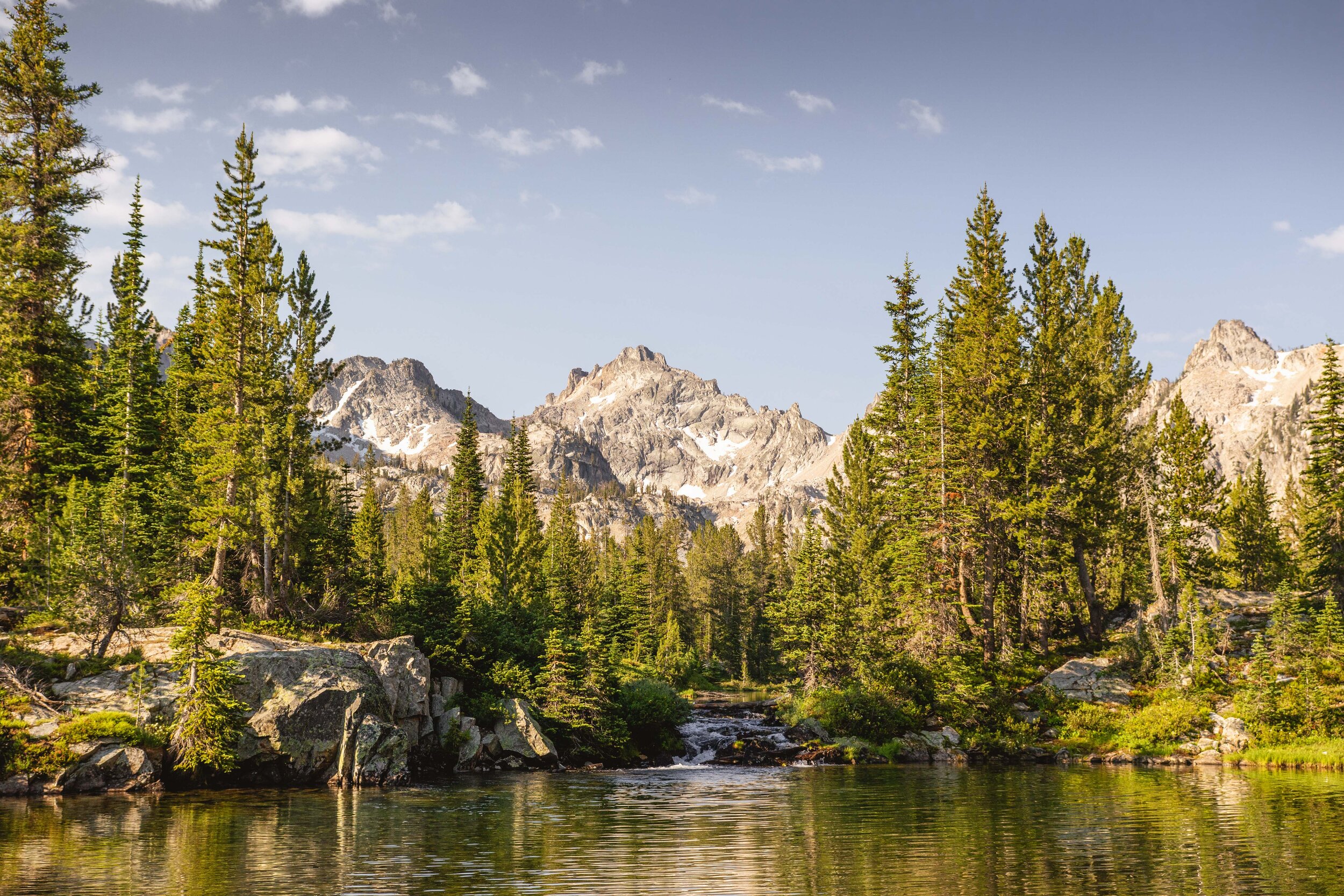During the 4th of July I decided to head out Stanley Idaho to further explore the Sawtooth Wilderness Area and simply rejoice in this wonderful place. Being a little more tied down to the valley this year I wanted to make sure my first visit was full of comforts and new experiences. This year my goal was to get deeper into the actual wilderness area and experience the alpine lakes that are plentiful here. Alice Lake is almost a cop out when it comes to hikes in the Sawtooths because next to Sawtooth Lake it is hands down the most popular hike there. That being said, as I have found, popular places are that way for a reason. So I filled a cooler full of food, grabbed the sleeping bag, hiking boots, and of course my cameras (only 5 of them).
The original plan was to wake up at 2:30 am and start the hike at 3:00 am in order to make it to the lakes before sunrise. This plan, as you may imagine, fell through because for one this was my first time hiking the trail and two I noticed the parking lot was “day use” so my anxiety kicked in since 3:00 am is not the day time. I did still wake up at that time though and made the last image in the set which is the center of the milky way above the Sawtooths. I’ll talk a little bit more about the astrophotography potential later on but there’s nothing like a partial moon perpendicular to the milky way. I then drove just outside the trail head near Pettit Lake and slept till 6:00 am, then started my hike.
The hike is a 7 mile out and back trail that starts at Tin Cup Trail Head, it took me about three hours to get up to the lake. What’s nice is that the trail follows Pettit Creek most the way and unlike a lot of the alpine lake hikes the elevation gain is quite gradual with only a short section of switchbacks. I loved the way the trails went in and out of the forest meandering in a nicely predictable way. That morning there was very little wind with just the right amount of chill to keep you going up and up.
In the square image you can see Pettit Lake and the tip of the far side of El Capitan. The light you can see hitting it is the reason why I wanted to be up there during the sunrise, because McDonald Peak is slightly higher it cast a shadow onto El Capitan which can be captured in a lake reflection. That being said, I think I made the right decision to start the hike later so that I got the warm glow of golden hour streaming through the forest as I made my climb. There is something so wonderful about mornings in the alpine.
If you have ever traveled with me then you know that I like to journal (I actually have a couple journal/notebooks for different things whether it’s personal, travel, or just ideas for art or inspiration, but I digress. In me travel journal I make sure to record dates, time of travel, miles, and other helpful observations like light, temperature, or bugs. I also just write about the place itself. I think going forward I’ll start sharing some of these rants/thoughts here.
“I swear mosquitos were invented to annoy, pester, and ultimately ruin the grand catharsis that happens around alpine lakes… It’s hard to describe the feeling of being surrounded by pokey granite, with remnants of snow from winter, and the lively chirps of birds. There’s an energy that surrounds this place one difficult to describe to others who haven’t experienced it. I don’t know if it’s the 30,000 or more years of evolution that has taken place unhindered by the Anthropocene or if its crossing that defined line that warns of everything the word wild means… I do love this place even enough to stay here writing despite the pesky mosquitoes. ”
As I mentioned before I took this image around 3:00 just as a partial weaning noon began to rise. This is the best time for astrophotography in the western hemisphere. It is the time where we get long nights of exposed milky way and many dark nights to see it. The major reason why I want to go back and spend the night at Alice Lake soon in that the moon is directly opposite the center of the milky way in the sky giving the best of both worlds. A dark sky from which the milky way can be seen easily and just enough ambient light to cover the foreground. As far as I can tell the milky way should be right behind the mountains North of El Capitan which should make a stunning image if I can pull it off.







